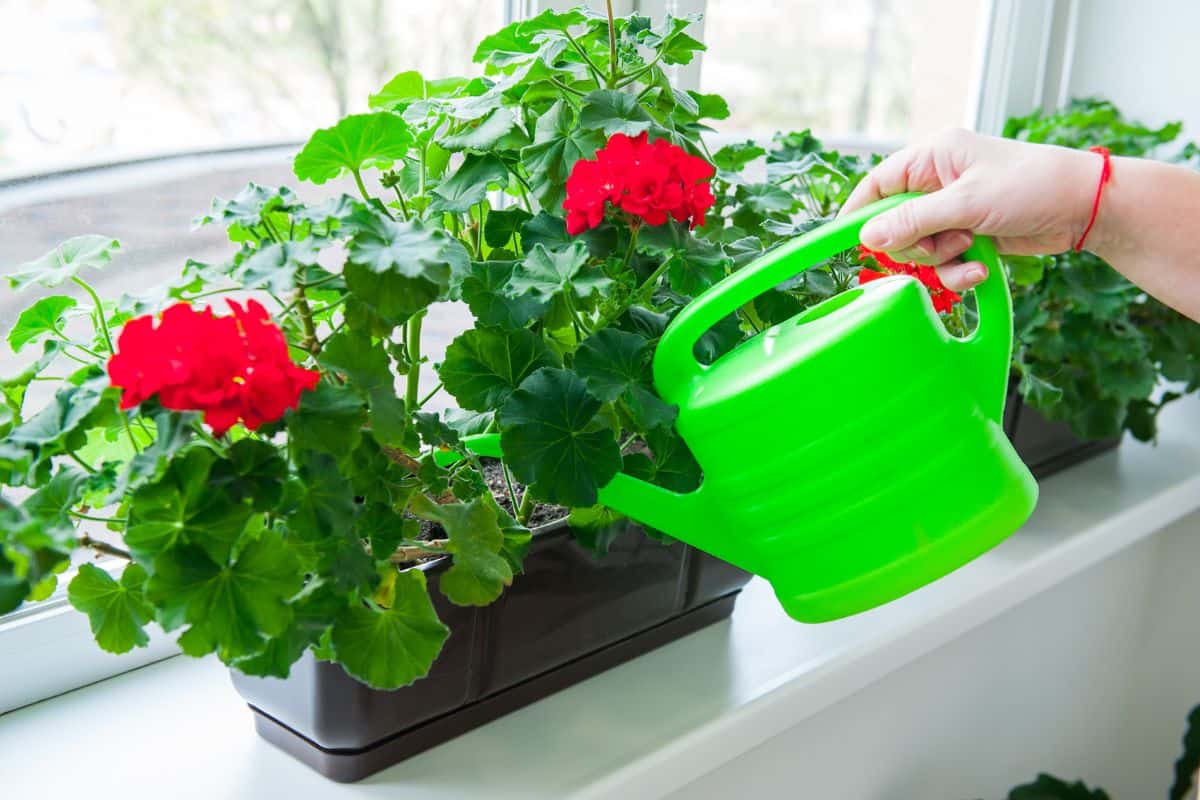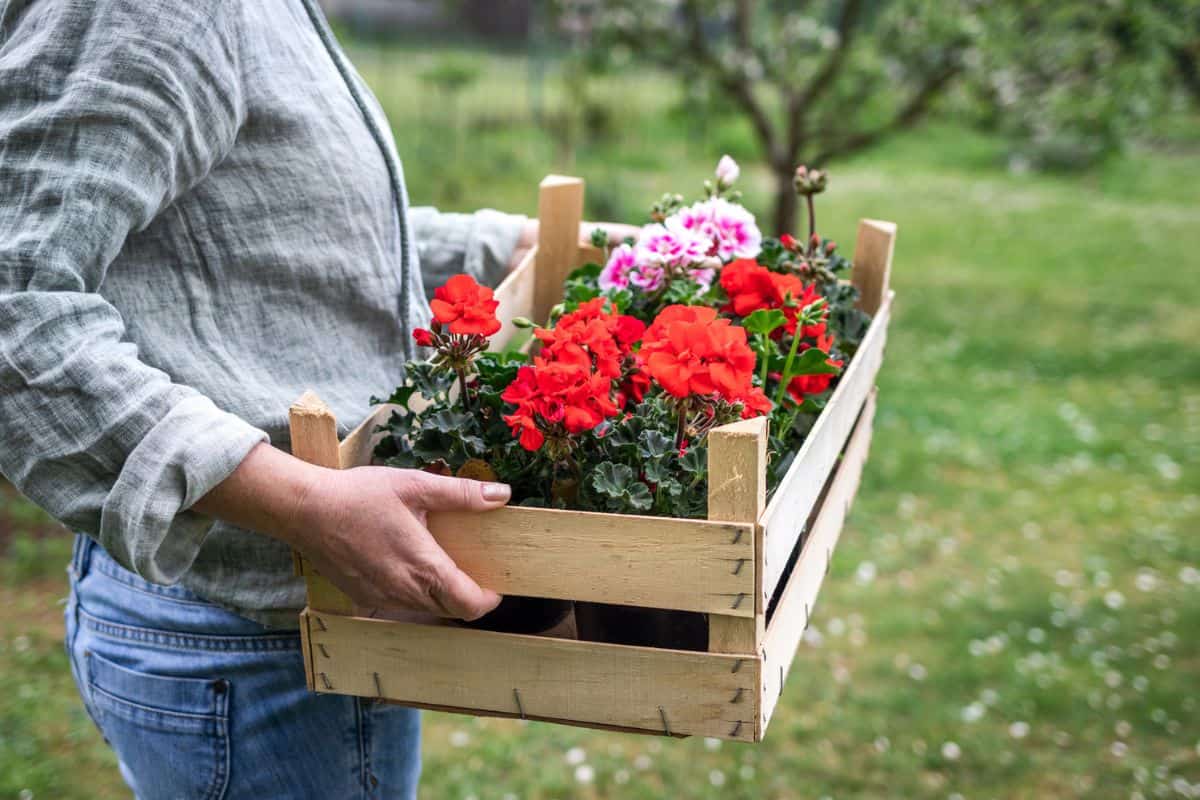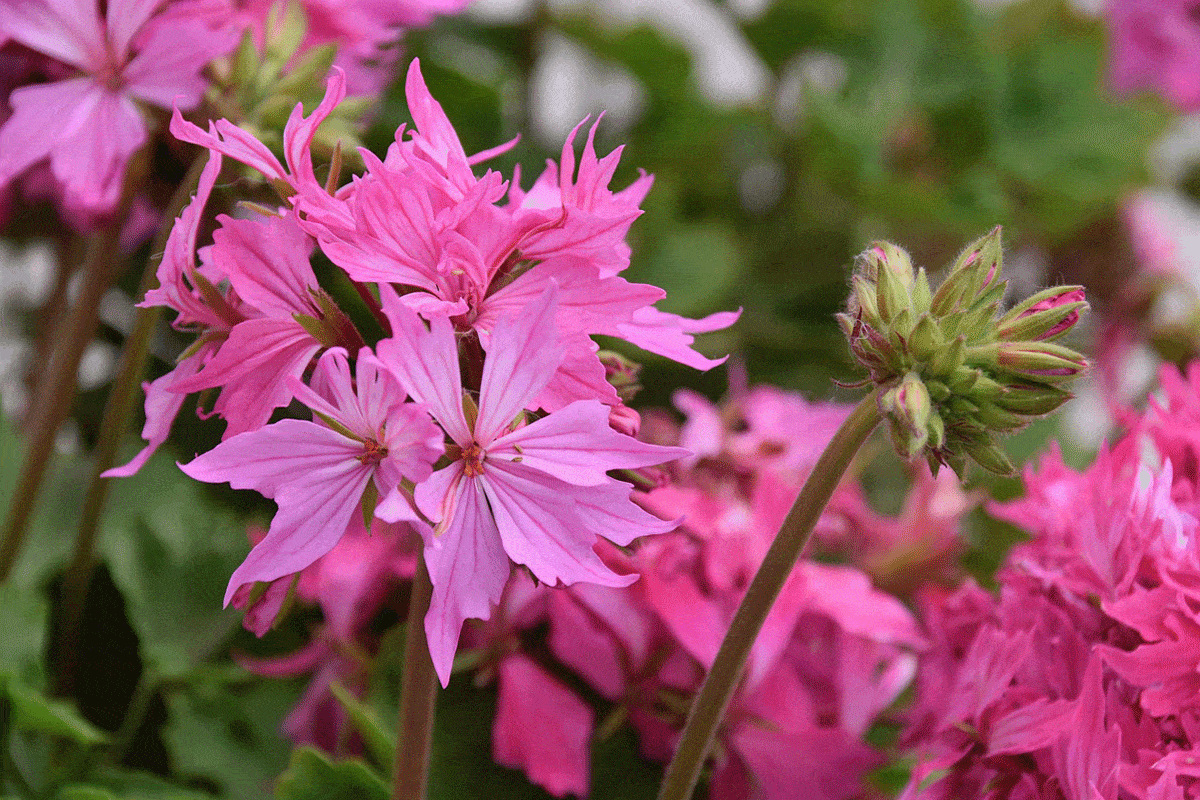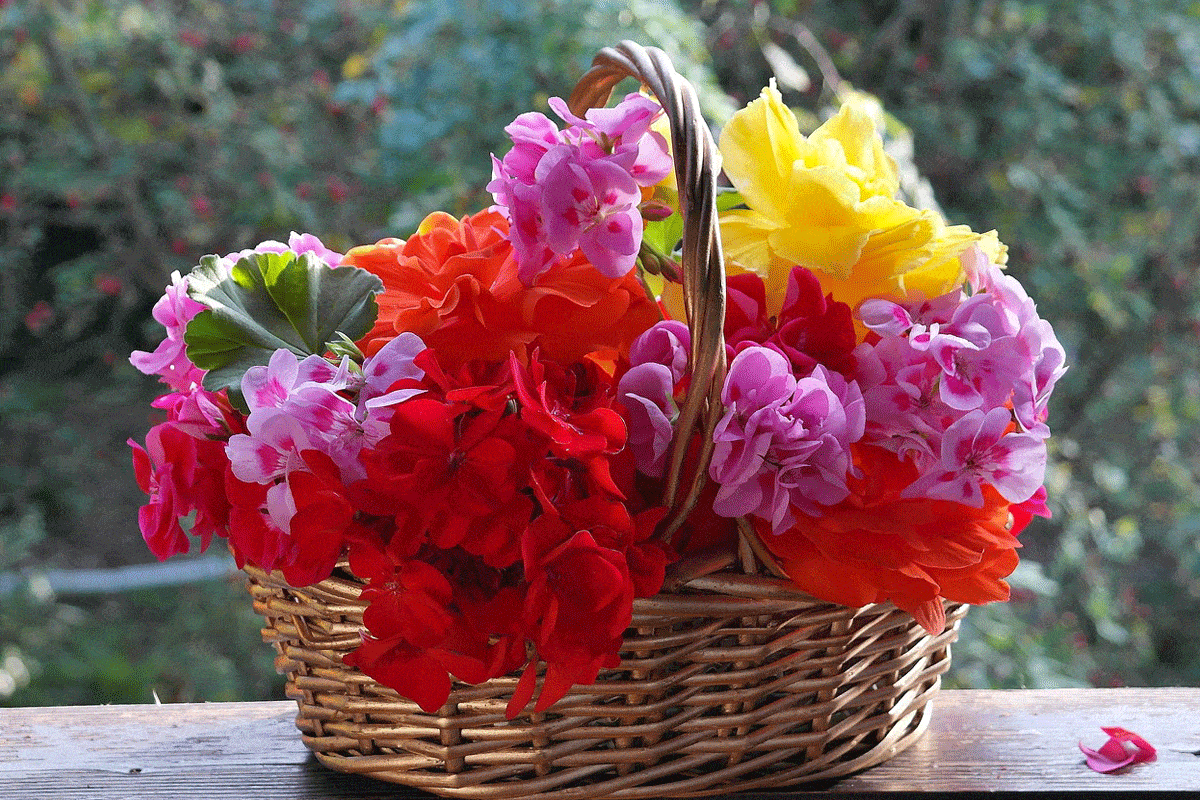Every gardener, no matter how experienced, will come across some common problems when growing geraniums. We’ve done the research on just about everything that can go wrong with your geraniums, and have some helpful tips to share with you in this post!
The most common problems encountered while growing geraniums are improper watering and bacterial or fungal disease.
Improper watering, whether too much or too little, is one of the most common mistakes that can cause problems with your geraniums growth and health. Bacterial or fungal disease can stunt your geraniums growth, and will often result in wilting or discoloration of leaves, stems, or flowers.
Being able to identify whether you are giving your geraniums the right amount of water and whether your geraniums have a disease of some kind can be tricky. Keep reading to see how we’ve broken it down in an easily understandable format for everyone from the experienced green thumb to the first time gardener!
Remember, we have more information on setting up your geraniums and caring for them in this detailed guide about how to grow geraniums.

Improper Watering

Improper watering of your geraniums can cause the following problems:
- Leaf dropping
- Discoloration of leaves, stems, or flowers
- Shriveling or drying up of leaves, stems, or flowers
- In extreme cases, death of the plant
Underwatering can affect your geraniums vibrancy and beauty, much like dehydration does for us. Think about how you feel when you’re outside on a hot summer day, the sun beating down on you, without any water to drink. Your geraniums are affected by the heat in much the same way you are, only they can’t move to the shade! Additionally, insufficient water can severely stunt the growth of your geraniums, so it’s especially important to properly water when your geraniums are young.
Overwatering can cause problems as well, as the roots will struggle to absorb nutrients and oxygen if the soil they are in is too wet. You can imagine this being somewhat like if you tried to breathe underwater. Yikes!
The best way to determine if improper watering is the cause of your problem is by getting your hands in the dirt, and checking if the soil is moist a couple of inches below the surface. If the soil is still moist a few inches down, you can hold off on watering for a little while longer. On the other hand, if the soil is dry a few inches down, your geraniums are thirsty; it’s time to water!
Bacterial or Fungal Disease in Geraniums

Bacterial or fungal diseases can present themselves in a number of ways. While proper watering is something the average gardener can easily control, oftentimes disease can seem to strike out of nowhere. Any gardener worth their salt has been through this; one day your geraniums are beautiful and blooming, the pride and joy of your home garden, and the next day they’re drooping, with a mysterious change in color and vibrancy. It’s enough to cause even an experienced gardener to panic! But rest assured, we’ve got the answers on how to identify if a bacterial or fungal disease is causing the problems with your geraniums. Some of the most common signs of disease are:
- Discoloration of leaves, stem or flowers
- The appearance of spots and splotches on the tops or undersides of leaves
- Shriveling or drying up leaves, stems or flowers
You might be thinking, but these are the same problems that can appear with improper watering, how do I tell the difference? That’s right, and why it is always important to first determine if you are properly watering your geraniums. Once you’ve determined that water is not the issue, then you can move on to assessing the presence of disease. Bacterial diseases can be spread through a number of vectors, including:
- Insects such as whitefly
- Water-borne pathogens
- Soil-borne pathogens
- Infected cuttings or tools
If you are watering properly, and your geraniums are still not looking their best, then they may have contracted one of the various bacterial or fungal diseases that can affect geraniums. You can find an in-depth list of some of the most common bacterial or fungal diseases here. For better pictures with which to identify the particular issue affecting your geraniums, check here.
So, now you understand how to identify the two most common problems experienced by geranium growers. To close, let’s briefly dive into some more specific questions relating to geranium care.
How Do You Revive Geraniums?

Sometimes your geraniums are getting the proper amount of water, don’t show any signs of disease, but are still looking weak or wilted. Reviving your geraniums can often be as simple as adding fertilizer to the soil, especially if you haven’t done so since the previous growing season. Additionally, geraniums can often be revived through the pruning away of weak or damaged leaves, stems or flowers.

(Loving those shades in the photo? Take a look at these 15 varieties of pink geraniums too!)
How Do You Treat Fungus on Geraniums?
Fungal infections need to be addressed quickly in order to prevent their spread. To treat fungus on your geraniums, prune away any affected areas, and promptly apply a fungicide to prevent its reappearance.
What Causes Geraniums Not to Bloom?

The reasons why your geraniums might not bloom can be very similar to the causes of other common problems. Some of the most widespread are insufficient sunlight, heat, or nutrients, and improper watering.
Why Are My Geraniums Rotting?
Rotting is usually caused by a bacterial or fungal infection. Stem rot, where the rotting begins at the stems and can cause blackening, is usually caused by a bacterial infection. Root rot, where the rotting begins at the roots and spreads to the rest of the plant, it typically caused by a fungal infection.
Why Are My Geranium Leaves Turning Black?
Your geranium leaves turning black is usually the sign of a fungal infection. Fungal infections often times begin in the soil and then spread to the rest of the plant, so inspect the leaves and stems closest to the soil to determine if a fungal infection is the likely cause of the discoloration.
Why are my geraniums turning yellow?
Yellowing of your geraniums leaves can be caused by overwatering, a nutrient deficiency, or the presence of disease. As always, start by checking to see that you are watering properly before investigating other possible causes.

Last, but not least, if your geraniums disappear overnight, you may want to take a look at this guide on deterring deer from eating your geraniums.
Remember, Don’t Panic!
All geranium gardeners are going to experience obstacles in their gardening journey. Identifying what is causing your particular issue is best determined through a process of elimination. First, start with checking that you are properly watering your geraniums. Then, you can move on to the other most common complication; bacterial and fungal disease. So take a deep breath, observe your geraniums closely, and rest assured that many gardeners before you have gone through the same dilemmas!


Hi Please can you tell me why my geranium roseanne petals have falle off suddenly . thank you
Hello- thanks- my 10 year old scented geranium suddenly died in our 100 plus heat – Do think maybe there was a change in watering, with both my husband and I watering it as it was going downhill.
Question is should we remove the soil? I have a cutting from the same plant that has grown up into a nice plant that I would put in the same pot, but should I change the soil first? Thanks